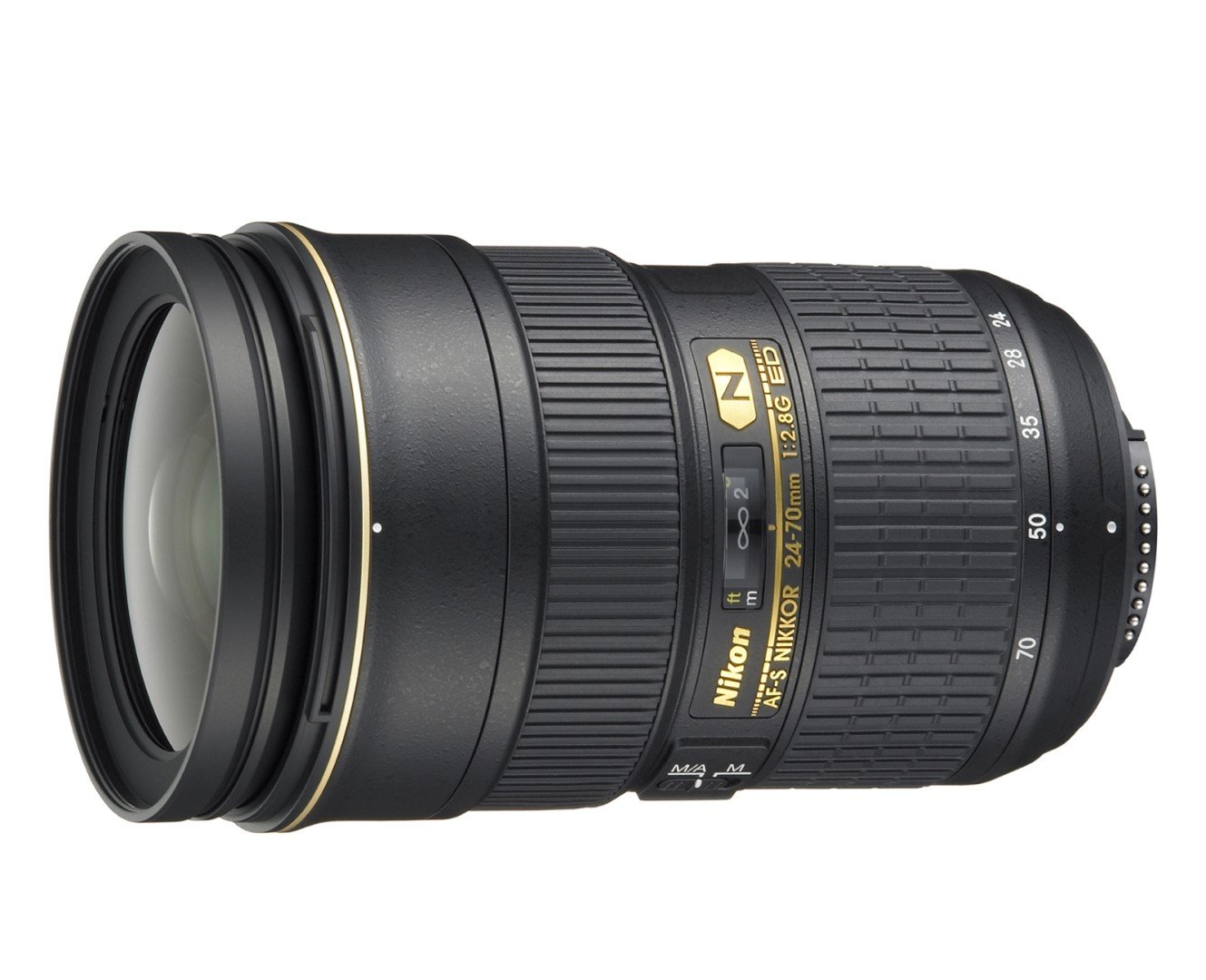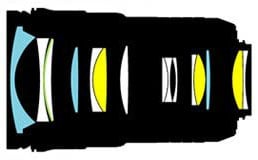Nikon 24-70mm f2.8G
-
-
Written by Thomas
Intro
The AF-S Nikkor 24-70mm f/2.8G ED is Nikon’s professional f2.8 standard zoom. It covers a 2.9x zoom-range and was announced August 2007. It’s the successor to the AF-S Nikkor 28-70mm f/2.8D ED and like its predecessor compatible with full-frame DSLRs. Its gold-ring, constant f2.8 aperture, and a price-tag of around 1500 EUR put it clearly in an upmarket / professional position although it is more affordable than the equivalent lenses from Canon or Sony.
While primarily designed as a general purpose bright zoom for full-frame models, you could equally use the Nikon 24-70/2.8G on a DX-body where it gives you an equivalent 36-105mm coverage plus future-proofing should you upgrade to an FX-body at a later date. Complement this lens with a DX 10-24mm wide-angle zoom and you can seamlessly cover a 7x zoom-range from ultra-wide-angle to short tele with only two lenses.
In this review I’ll put Nikon’s AF-S 24-70mm f/2.8G zoom to the test on a Nikon D800 to see whether the lens is a good match for the highest resolution 35mm DSLR.

Facts from the catalog
As usual I’ll have a look at the technical data first. I’ve rated the features with a [+] (or [++]), when it’s better than average or even state of the art, a [0] if it’s standard or just average, and [-] if there’s a disadvantage.
 |
Size (diam. x length): 83 x 133 mm (3.3 x 5.2 in.). For such a short maximum focal length of 70mm it is surprisingly long (+24mm over the Tamron’s SP 24-70/2.8 VC) albeit pretty slim (-5mm over Tamron’s). The lens-hood adds another 52mm (to a total length of 185mm) and then the lens really looks conspicuous and people feel being “watched” with this lens. [0]
Weight: 900 g (31.7 oz.) vs. 825g of the Tamron 24-70/2.8 VC. Together with a full frame body you’ll be schlepping 1.7kg around. [0]
Optics: 15 elements in 11 groups. That’s pretty low in comparison but still: 11 groups have 22 air/glass-surfaces that produce a lot of opportunities for flares and ghosts. Nikon has applied their special Nano Crystal Coat on one element – and their so-called super integrated coating on others. We’ll see how this works out in practice. The cross-section shows a lot of special elements: three aspherical and three extra-low dispersion elements. [+]
Closest focus distance/max. magnification: 0.38 m (1.2 ft.) / 1:3.7. In my tests I was able to confirm this. This is pretty useful for capturing nature close-up – see one of my images from the gallery. [+]
Filter-thread: 77mm = standard with most pro-lenses [+]
IS: No = a pity! Tamron’s latest design has image stabilization (called VC) that works, Nikon’s own 16-35/4.0G has VR. Sony’s lenses all get image stabilization through body/sensor-based IS. So this lens will make you go for 4-8x shorter shutter speeds/higher ISOs than with alternatives if you don’t want shake to ruin your shot. And shake you see: Just look through the viewfinder at 70mm! [-]
AF: AF-S with SWM (silent wave motor), so it does work on D60/3×00/5×00-bodies , manual-focus override by turning the focus ring [+]
Covers full frame/FX or smaller = very good [+]
Price: around 1500 EUR new (incl. 19% VAT) = expensive. The alternatives from Tamron and Sigma are 30-50% cheaper. [-]
Comes with a very nice semi-soft lens-case that is well padded, the lens-shade is included, reversible for transport, and has an interlock to prevent accidental loss, and the lens-caps are standard Nikon’s. [+]
Distance information is relayed to the camera, so the Nikon body can do all the advanced exposure-related stuff with this lens. But this is true for all alternatives too. [+]
Aperture ring = no, just like all competitors. [0]
Sealing: yes! A rubber grommet at the lens-mount. [+]
The score in the “features-department” is 2[-]/3[0]/8[+]. The minus-points being the steep price and the missing image stabilization. But the price is only high compared to third party alternatives. If you compare the lens to offerings from Sony and Canon you could as well say that the Nikon is relatively cheap.
Motivation
:
A 2.9x zoom with a focal range of 24-70mm may be your best choice for a full-frame/FX-body when you want to be prepared for many standard situations but want a larger maximum aperture and better image quality than you would expect from kit-zooms. It is arguably the best zoom range and focal ratio for wedding and portrait photographers.
At 24mm shortest focal length it lets you capture a crowd in tighter spaces or shoot architecture. And the 70mm on the long end gives you some reach and working distance for portraits and street-photography although you may find it too short on a FX-body in some situations. It has a one stop larger aperture than kit-zooms which can produce a shallower depth of field and lets you isolate your subject a little more.
Alternatives
:
– The Tamron SP 24-70mm f/2.8 Di VC USD: At around 1000 EUR it’s not only considerably cheaper but it offers image stabilization too. Plus it offers good overall performance that earned this lens a Recommended rating, as you can read in my Tamron 24-70/2.8 VC review.
– From Sigma there’s the AF 24-70mm f2.8 EX DG HSM. It’s the cheapest alternative at around 750EUR. Non-stabilized and physically shorter than the Nikon with the focus ring in front and the zoom-ring near the camera. Some reports have shown it to have pretty poor border/corner-performance wide open.
Testing: Longitudinal Chromatic Aberration
With lenses offering an aperture of f2.8 or larger I test for longitudinal CA (loCA, a.k.a. “axial color” or “bokeh CA”). The Nikon 24-70mm f2.8G shows some loCA. There are some magenta coloration on the left and greenish hues on the right to be seen. That is clearly worse than the results from Tamron’s equivalent, but it is still not too obvious in real-life shots. Note: The alternating colorations of the vertical marks on the right are a sign of color-moire only and have nothing to do with loCAs.




